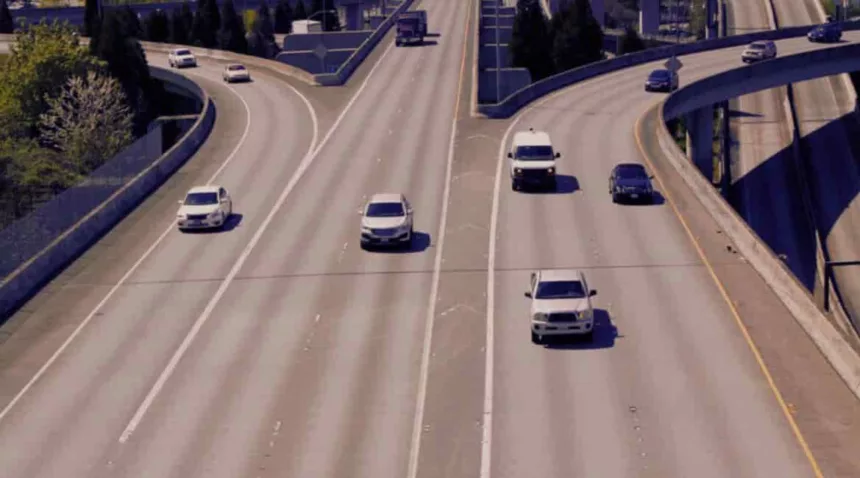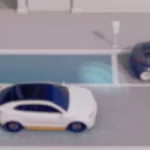Merging onto a freeway or highway can be a daunting task for even the most experienced drivers. The high speeds and heavy traffic can make it difficult to find a safe gap to merge into.
However, with a little planning and practice, anyone can learn to merge onto a freeway safely and confidently. In this article on IchieTech, we will go over step-by-step instructions on how to merge onto a freeway.
Preparation
Before you even get onto the freeway, there are a few things you can do to prepare for a safe merge.
1. Familiarize Yourself with the Freeway
Take some time to study a map of the freeway or highway and familiarize yourself with the exits, ramps, and traffic patterns. This will help you to plan your merge and avoid any surprises.
2. Check Your Car
Make sure your car is in good working condition. Check your tire pressure, fluid levels, and lights. You should also make sure that your windshield wipers are working properly and that your car has enough gas.
3. Adjust Your Seat and Mirrors
Adjust your seat so that you are comfortable and have a good view of the road. Adjust your mirrors so that you can see behind you and into your blind spots.
Merging Onto the Freeway or Highway
Once you are on the approach ramp, follow these steps to merge safely onto the Freeway or Highway:
1. Understanding the On-Ramp
The on-ramp serves as the gateway to the freeway, providing drivers with the necessary space to accelerate to match the speed of the traffic already on the highway. As you approach the on-ramp, make sure to use your turn signal to indicate your intention to merge. This not only alerts other drivers but also helps in creating a smoother transition.
2. Adjust Your Speed
One crucial aspect of merging onto a freeway is adjusting your speed. While on the on-ramp, gradually increase your speed to match the flow of traffic. It’s essential to reach a speed that allows you to seamlessly merge without causing disruptions to the vehicles already on the highway. Aim to reach the speed of traffic, but don’t feel pressured to exceed the speed limit.
3. Check Your Mirrors
Before making your move onto the freeway, check your mirrors to ensure there’s a safe gap in traffic. Pay close attention to both side mirrors and the rearview mirror to have a comprehensive understanding of the surrounding vehicles. Look for a sufficient space in traffic that will allow you to merge without causing any abrupt manoeuvres for you or other drivers.
4. Maintain a Safe Following Distance
As you approach the freeway entrance, maintain a safe following distance from the vehicle in front of you. This provides you with the necessary reaction time and ensures that you can adjust your speed if needed. Keeping a safe distance is a fundamental practice for safe merging and highway driving in general.
5. Blend In Smoothly
Once you’ve identified a suitable gap in traffic, it’s time to merge. Signal your intention to merge, double-check your blind spots, and smoothly blend into the flow of vehicles. Avoid abrupt movements or sudden acceleration, as this can create dangerous situations. A gradual and smooth merge is the key to a successful entry onto the freeway.
6. Understanding Right of Way
While merging, it’s crucial to understand the concept of right of way. Vehicles already on the freeway have the right of way, so it’s your responsibility as the merging driver to find a suitable gap and adjust your speed accordingly. Being aware of this principle helps in making informed decisions and contributes to the overall safety of the merging process.
7. Handling Heavy Traffic
Merging onto a freeway during heavy traffic requires additional attention. In congested situations, it might be challenging to find a significant gap. In such cases, exercise patience and wait for a reasonable opportunity to merge. Avoid the temptation to force your way into traffic, as this can lead to accidents and disrupt the flow.
8. Practice Defensive Driving
Defensive driving is a crucial skill when it comes to merging onto a freeway. Stay alert, anticipate the movements of other drivers, and be prepared to react swiftly if needed. Defensive driving not only enhances your safety but also contributes to the overall efficiency of traffic flow.
9. Utilize Freeway Entrance Lanes
Some on-ramps come equipped with entrance lanes, providing an extended space for acceleration. Take advantage of these lanes to reach the desired speed before merging into the main flow of traffic. This additional space can make the merging process more comfortable and less stressful.
Tips for a Safe Merge
Here are a few additional tips for merging safely onto a freeway or highway:
- Be patient: Do not rush your merge. Take your time and make sure that it is safe to merge before you do so.
- Be aware of your surroundings: Pay attention to the cars around you and be prepared to react to their actions.
- Use your turn signal consistently: Let other drivers know your intentions by using your turn signal well in advance of your merge.
- Avoid distractions: Put your phone away and focus on driving.
- Be assertive, but not aggressive: Don’t be afraid to take a gap when it’s there, but don’t push your way into traffic.
Common Mistakes to Avoid
Here are some common mistakes that drivers make when merging onto a freeway or highway:
- Speeding up too quickly: This can cause you to lose control of your car or make it difficult to find an opening in traffic.
- Not using your turn signal: This can confuse other drivers and make it difficult for them to know what you are planning to do.
- Merging into a gap that is not large enough: This can cause you to cut off other drivers or cause an accident.
- Slowing down or stopping in the merge lane: This can block traffic and create a dangerous situation.
- Tailgating the car in front of you: This can make it difficult to stop if the car in front of you suddenly slows down or stops.
Conclusion
In conclusion, merging onto a freeway or highway can be a stressful experience, but it doesn’t have to be. By following these simple steps, you can safely and easily merge onto the freeway. Remember to always signal your intention, check your mirrors, adjust your speed and position, merge into traffic gradually, and continue to drive safely. By doing so, you can avoid accidents and make the roads safer for everyone.










